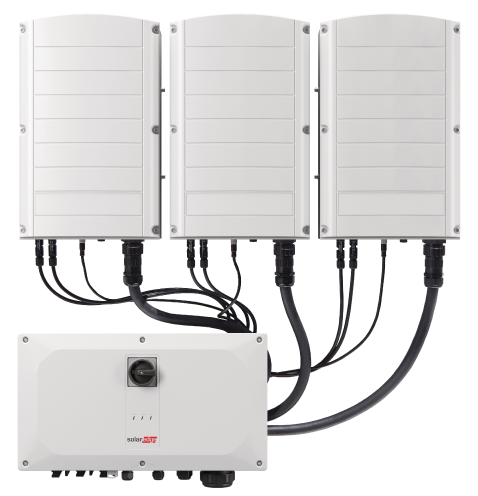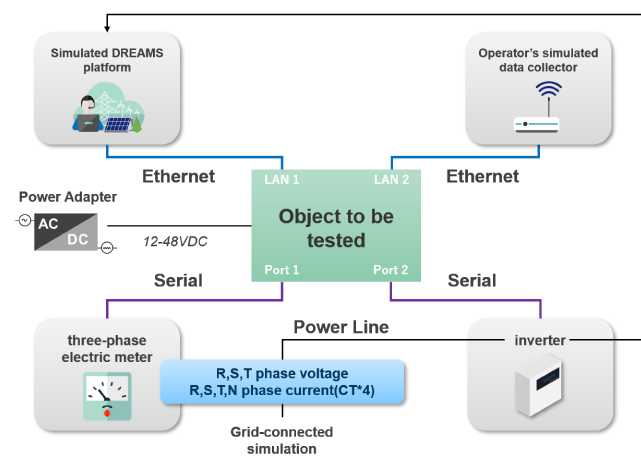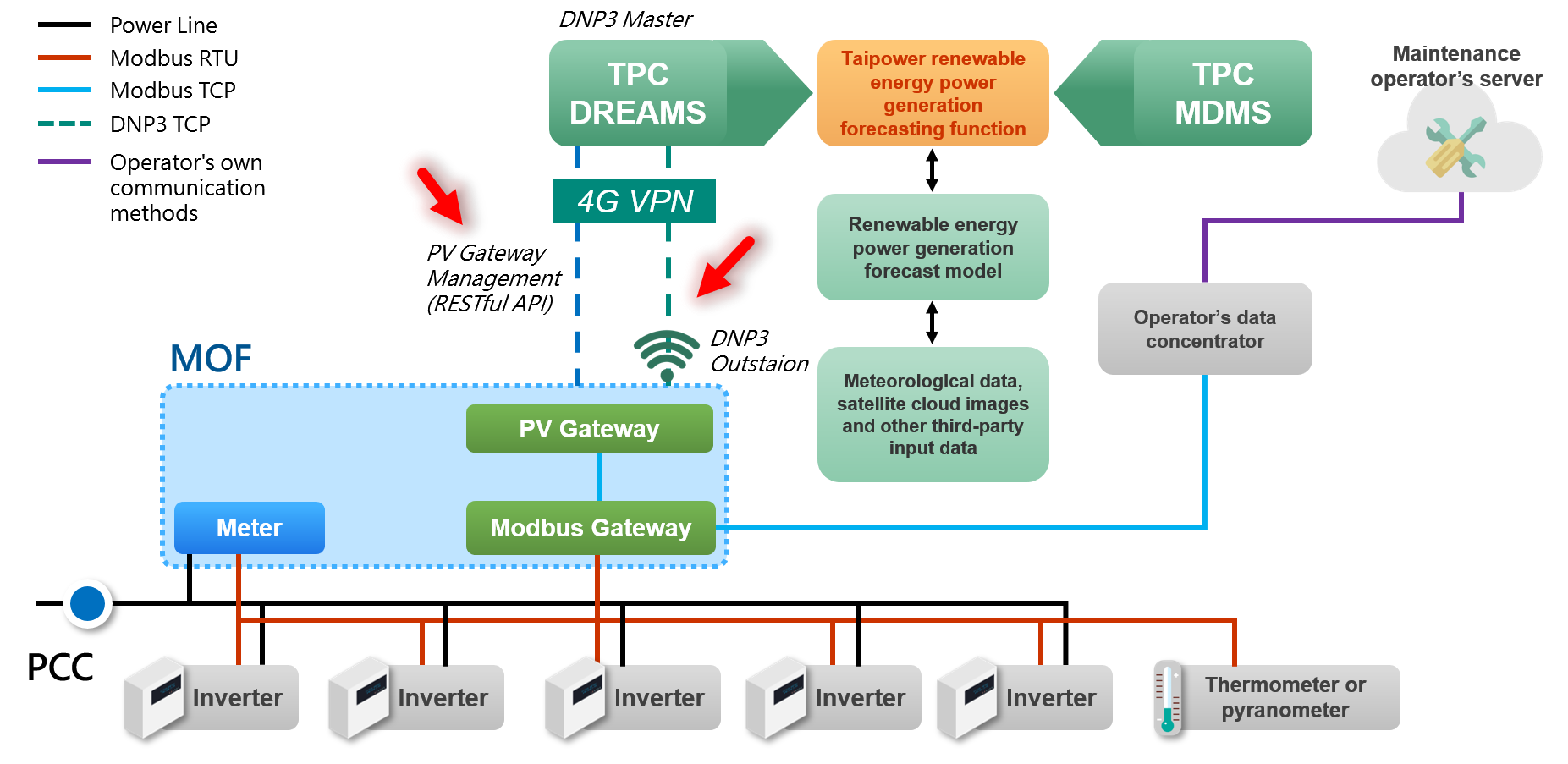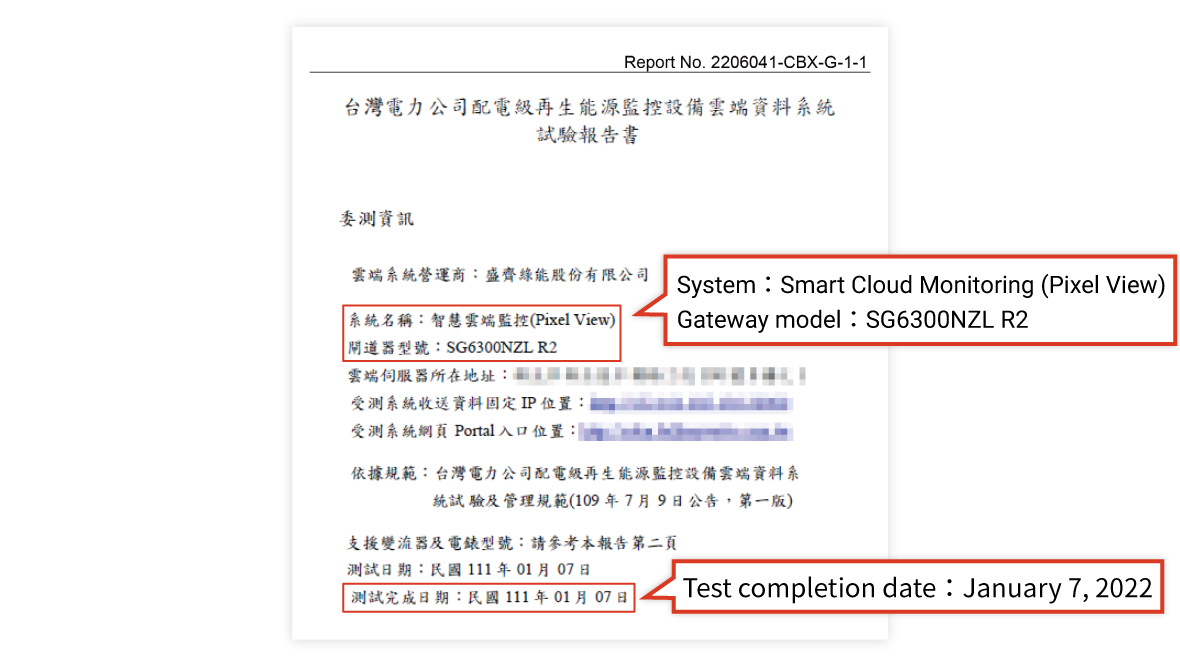BillionWatts’ Hardware and Software Passed the Taipower DREAMS Test.
In order to cooperate with the government's development of renewable energy, a large number of distributed power generation systems will be connected to Taipower's power distribution system in the future. The solar PV power system with 500kW capacity or more should collect power generation data through the solar PV gateway and comply with the DNP3.0 communication protocol format stipulated by Taipower.
DREAMS function expansion equipment purchase introduction
Billion Watts provides a full range of SCADA power monitoring systems from medium and high voltage transmission levels of 161kV and 69kV, including component supply and optical fiber wiring construction, and further extended to power distribution levels of 22.8kV and 11.4kV, DREAMS software and hardware supplies required by PV project sites with a scale greater than 500kW. Considering that in the future, PV sites above 100kW must transmit power generation data in real time, including real (virtual) work power generation, power factor, the voltage of point of common coupling, and related setting values, etc., using wireless 4G or 5G VPN (virtual private network) communication method to return the above data to the Distributed Renewable Energy Advanced Management System (DREAMS) Platform.
*DREAMS (Distributed Renewable Energy Advanced Management System)
Major items of Taipower DREAMS test
1.Data Collection Ability

- Confirm that the values of the simulated DREAMS platform and the three-phase electric meter are consistent.
- Confirm that the data collectors of the simulation applicant are consistent with the values of the three-phase electric meter.
- Power generation data includes real (virtual) work power generation, power factor, voltage of point of common coupling and related setting values, etc., and uses wireless 4G or 5G VPN (Virtual Private Network) communication methods to send the above data back to Taipower DREAMS platform.
2.Equipment Control Capability

- Simulate the DREAMS platform to cancel the independent control of the inverter and confirm that the inverter is in the state of accepting external control.
- Simulate the DREAMS platform to restore the inverter’s self-control and confirm that the inverter is in the self-control state.
3.Equipment Management Ability

- Simulate the DREAMS platform to execute the DUT (device under test) firmware update and confirm that the DUT firmware update is completed.
- Simulate the DREAMS platform to execute the DUT configuration file update and confirm that the DUT configuration file update is completed.
Source:Specification for test and management of TPC distribution renewable energy monitoring equipment
DREAMS Structure Diagram
-
Why does Taipower DREAMS use the DNP3.0 communication standard?
Under the DNP3.0 standard framework design, various data types can be collected to cope with the data collection of a large number of renewable energy sites in the future and improve the stability of the power grid.
-
DREAMS Usability Eligibility Definition
Counting from the official connection between the case site and DREAMS, the running time plus crash time plus pause time has reached 720 hours in a row, the availability of individual equipment is above 95%, and no crash time occurred in the last 48 hours; then it is qualified.
Taipower DREAMS related test framework
Basic specifications for renewable energy monitoring equipment PV gateway
- Taipower announced that the technical protocol for transmission requirements is DNP3.0
- Requires GPS capability
- Must support RESTFul APIs, through which the following functions can be completed on the DREAMS system side:
- Confirm the online and offline status of the PV gateway.
- Allows remote firmware update (firmware provided by the manufacturer).
- Allows remote setting of hardware peripherals, including the settings of LTE, Ethernet, RS232/422/485, Time Zone, etc.
Source:Test and Management Specifications of Taipower’s DREAMS
Pixel View can effectively reduce hardware purchase costs.
Pixel View is equipped with smart solar inverters and sensors to monitor power generation data, manage solar power plants through AIOT technology, increase power generation revenue, and accept Taipower DREAMS dispatching at the same time, reducing the impact of intermittent grid-connected renewable energy and assisting in stabilizing the quality of power supply of the overall grid.
In addition to adding AI analysis and fault prediction modules, BillionWatts’ Pixel View integrates the DNP 3.0 communication format to interface with Taipower DREAMS platform. It has passed the Taipower DREAMS specification test. It can help Taipower grasp power generation information to dispatch each generating unit in real time and improve the resilience of grid-connected renewable energy, thus making the national grid more intelligent.
MW+
Pixel View solar energy enterprise-level monitoring system has been adopted by each major renewable energy investor in various fields.
Relying on rich experience in software and data analysis, and through advanced AI technology, BillionWatts has developed its own Pixel View monitoring system, which has installed more than 500MW so far. PV sites can use the system to grasp real-time power generation information, dispatch smart inverters, and execute remote site incident scheduling. Easy management of multiple case sites not only detects various faults 24 hours a day but also can automatically learn and analyze the results through AI, predict the future loss of power generation, and preventively execute remote incidents and manpower dispatching, improving the accuracy of overall maintenance and operation.
Timeliness of data return requested by DREAMS
The time for cloud monitoring to complete DREAMS control commands and return data to DREAMS shall not exceed 3 seconds.
When the power measurement unit needs to return data exceeding the dead band, it must possess an active self-report function (unsolicited response) and send the data to the DREAMS control system in DNP3.0 format within 1 second to facilitate real-time monitoring of the case site power quality.
The Company
Solutions
886-908-810-876
886-800-585-665
sales@billionwatts.com.tw
7F, No.190, Sec. 2, Zhongxing Rd., Xindian Dist., New Taipei City 231,Taiwan
About Billion Watts
Service items
886-908-810-876
886-800-585-665
sales@billionwatts.com.tw
7F, No.190, Sec. 2, Zhongxing Rd., Xindian Dist., New Taipei City 231,Taiwan
Contact Us
886-908-810-876
886-800-585-665
sales@billionwatts.com.tw
7F, No.190, Sec. 2, Zhongxing Rd., Xindian Dist., New Taipei City 231,Taiwan



